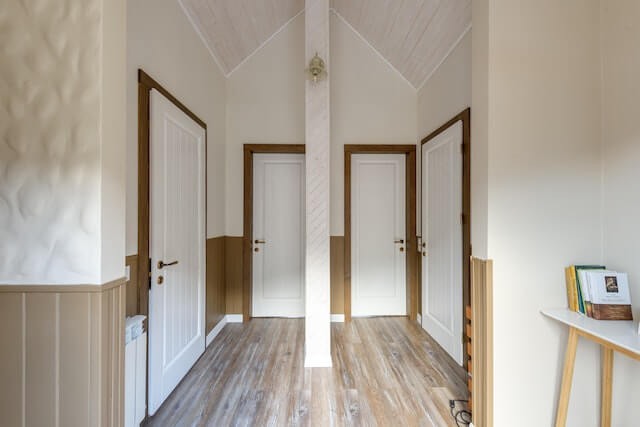The concept of micro-apartments has gained significant attention in recent years as a unique and innovative housing option. These compact living spaces, typically ranging from 150 to 500 square feet, are designed to maximize efficiency and cater to the evolving needs of tenants. With their growing popularity among urban dwellers, landlords may find themselves considering the investment potential of micro-apartments. However, before venturing into this niche market, it is crucial for landlords to carefully evaluate several factors.
In a previous article, we discussed what micro-apartments are and why they are becoming increasingly popular. In this comprehensive guide, we will explore what landlords should consider before investing in micro-apartments and provide valuable insights to aid in decision-making.
Understanding Micro-Apartments
Micro-apartments, also known as micro units or efficiency apartments, represent a modern solution to the challenges of urban living. These units typically feature open floor plans, multifunctional furniture, and clever storage solutions, enabling tenants to make the most of limited space.
Micro-apartments have gained popularity among young professionals, students, and individuals seeking affordable and conveniently located housing options in bustling city centers. The appeal lies in their ability to provide all the essential amenities within a compact footprint, allowing tenants to enjoy urban living at a more affordable price point.

Advantages for Landlords
As the rental market evolves and the preferences of tenants change, landlords must adapt and explore new opportunities. Converting properties into micro-apartments allows landlords to tap into a niche market and attract a specific demographic of tenants. With the increasing popularity of compact living spaces, investing in micro-apartments can provide several advantages.
Diversification
Converting properties into micro-apartments diversifies your rental portfolio. By offering a range of housing options, you can cater to different segments of the rental market and attract a wider pool of potential tenants. This diversification can help mitigate risks and ensure a steady rental income.
Maximizing Rental Income
Micro-apartments have the potential to generate higher rental yields compared to traditional apartments. With lower operating costs and the ability to charge competitive rents due to their prime locations, landlords can achieve favorable returns on investment. The demand for affordable and conveniently located housing in urban areas creates a favorable market for micro-apartment rentals.
It makes sense to think that since micro-apartments are less expensive to rent, the owner will make less money as a result. Data, however, disprove this.

Data from the Urban Land Institute show that compared to most traditional apartments, micro-apartments have higher occupancy stabilization and provide higher rent-per-square-foot ratios.
Smaller flats allow owners to house more tenants in a single structure. Rents per apartment may be lower, but if there are more tenants overall, the profit margin will be higher.
For example:
Let’s imagine, for illustration, that you were the owner of a 20-unit apartment complex with an average unit size of 1,000 square feet. Let’s assume that each unit rents for $2,000 per month on average. The building would bring approximately $40,000 each month.
Take the same structure and divide each floor plan in half to get 40 flats with an average size of 500 square feet.
You will be able to charge a higher (but, still below the city average) rent of $1,300 per unit by including appealing community amenities. The same structure could then bring in $52,000 per month.
Flexibility and Adaptability:
Micro-apartments offer flexibility in terms of design and use of space. Landlords can creatively configure the layout to accommodate the needs of tenants.
For example, incorporating shared common areas, communal kitchens, or co-working spaces can enhance the living experience and foster a sense of community among residents. This adaptability allows landlords to cater to the evolving preferences of tenants and create unique living environments.
Landlord Considerations
While the potential benefits of investing in micro-apartments are significant, it is important to consider the following factors:
Local Regulations
The concept of micro-apartments is relatively new as it only began to acquire serious traction after the pandemic’s economic changes.
Since this concept is still in its infancy, there are still growing pains associated with investing in the housing alternative. Zoning restrictions and regulations are one of the biggest obstacles.
States’ zoning rules and regulations specify where and how these structures can be built. There is frequently a minimum square foot requirement in residential rules. For instance, New York City requires residential rental apartments to have at least 400 square feet. ft. However, it took them nearly 20 years to change the rule. So it might also take time before other states can be more welcoming to the concept of micro-apartments.
Familiarize yourself with local zoning regulations and building codes to ensure compliance when converting properties into micro-apartments. Understanding the legal requirements and obtaining the necessary permits is essential to avoid complications down the line.
Market Research
Conduct thorough market research to assess the demand for micro-apartments in your target area. Consider factors such as demographic trends, employment opportunities, and rental market dynamics. This research will help you determine the viability of converting your property into micro-apartments and tailor your offerings to meet the specific needs of the local market.
There is certainly a demand in the market for micro-housing right now. Micro apartment living can appeal to a variety of tenant types, including:
- Young professionals looking to stay close to the office, but save money.
- College students looking to live off campus cost-effectively.
- Older renters and retirees looking to live in a convenient urban area and downsize their living expenses.

Tenant Screening and Management
Implement robust tenant screening processes to ensure you attract responsible and compatible tenants for your micro-apartments. With limited space, it is crucial to select tenants who will respect the property, adhere to community guidelines, and contribute positively to the living environment. Establish clear expectations and maintain open lines of communication with tenants to foster a harmonious landlord-tenant relationship.
When you publish a listing on Padleads, there’s a high chance you will receive tons of applications. For a landlord or rental agent, conducting a meticulous screening process can help find the right tenants.
In conclusion, micro-apartments offer a compelling opportunity for landlords to capitalize on the growing demand for compact and affordable rental housing. With their efficient design, prime locations, and potential for higher rental yields, micro-apartments can provide a profitable investment avenue. However, it is important to conduct thorough research, understand local regulations, and carefully manage tenant selection and relationships. By considering these factors and embracing the micro-apartment trend, landlords can tap into a market segment that caters to the evolving needs and preferences of tenants.